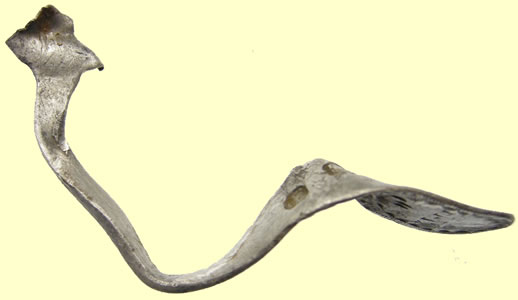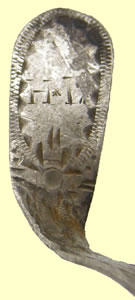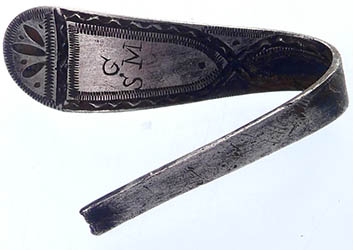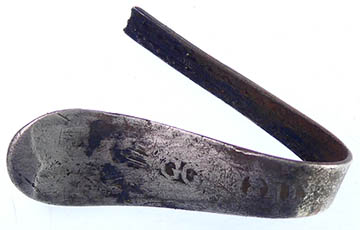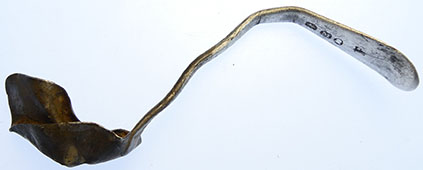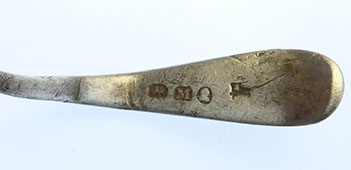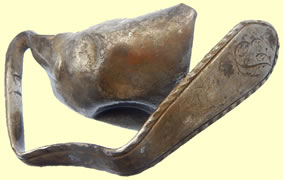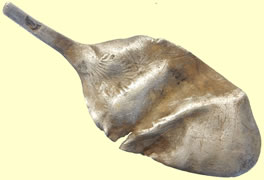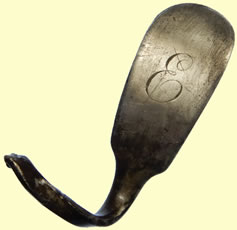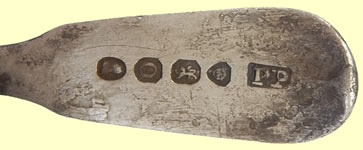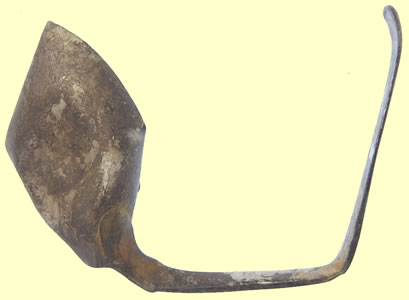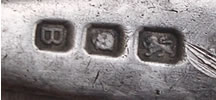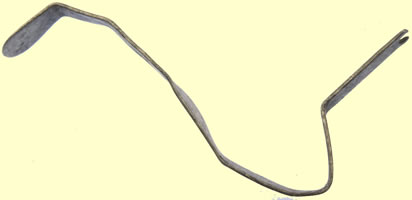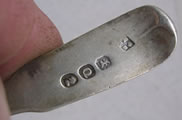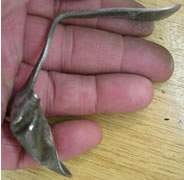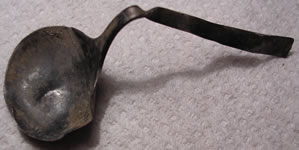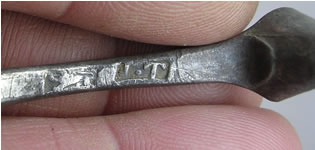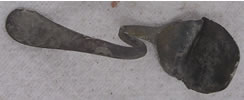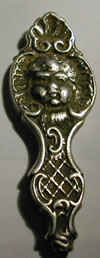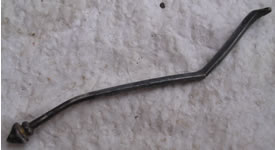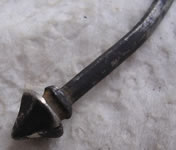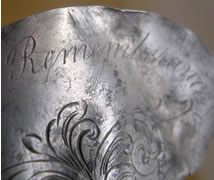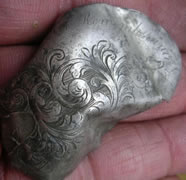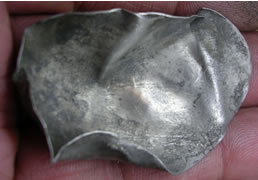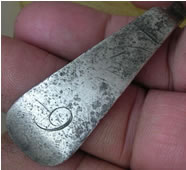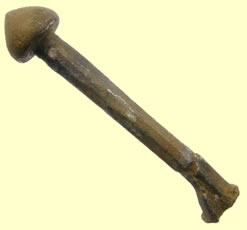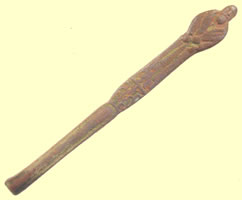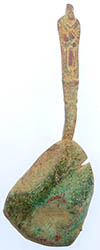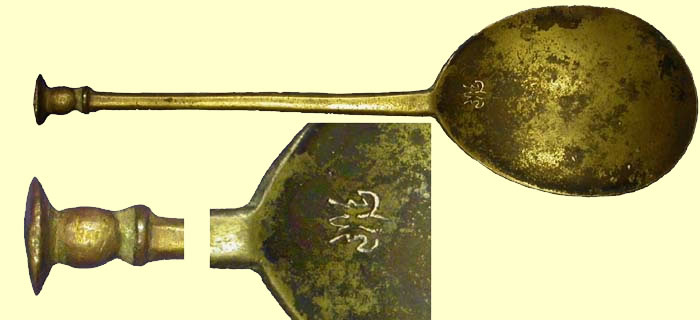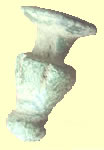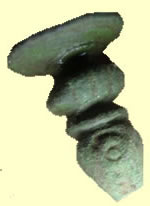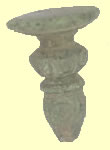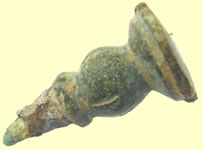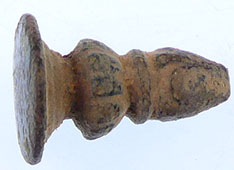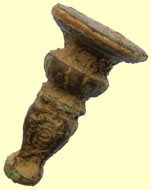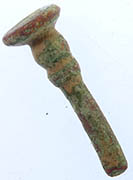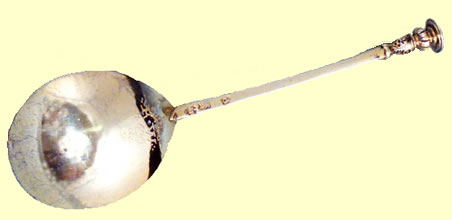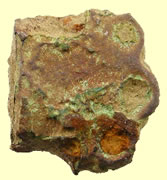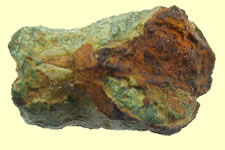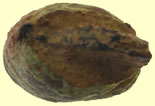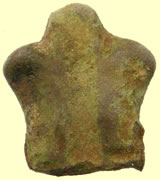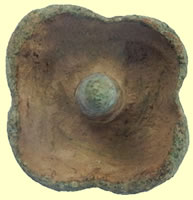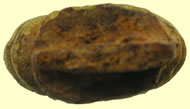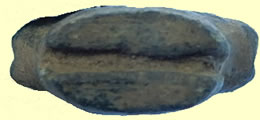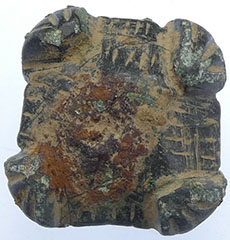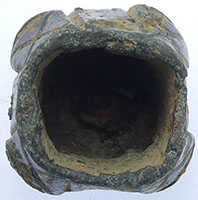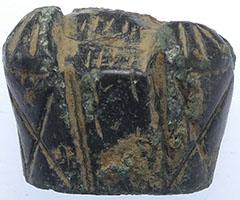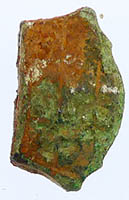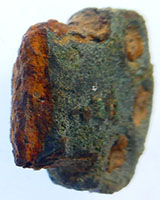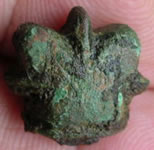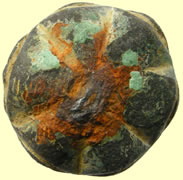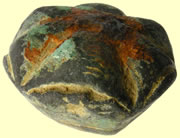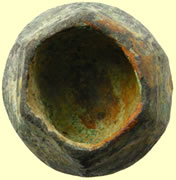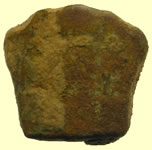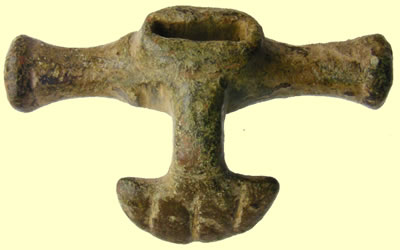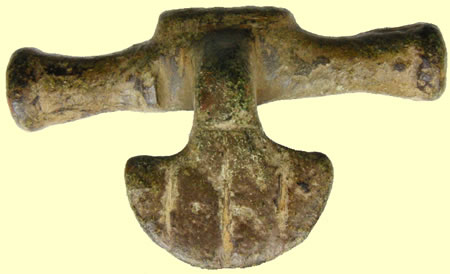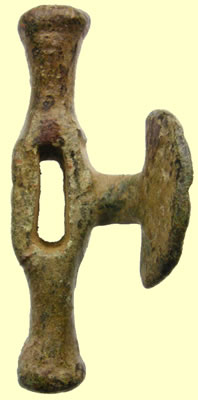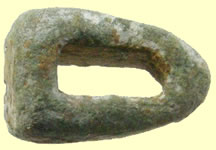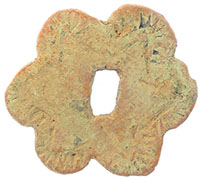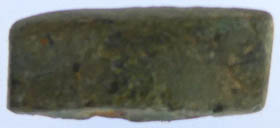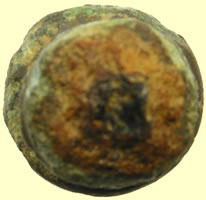

Metal detecting holidays in England with the World's most successful metal detecting club.20 years plus.
Twinned with Midwest Historical Research Society USA.
Roman to modern Cutlery items- Knives, forks and spoonsPastry jiggers
|
||||||
|
1784 Initialled and decorated silver spoon - maker CH - London Charles Hougham London
|
||||||
|
Georgian monogrammed silver spoon - Maker GG George Grey 1797
1873 Victoria silver spoon with full set of hall marks -London mint - Queens bust duty paid bust Maker SS - Sarah Snatt
Georgian silver spoon
1802 monogrammed spoon handle - Duty paid George III bust
1807 silver spoon - London mint - George III duty paid bust
1788 silver spoon - London hall mark - Maker SG - Duty paid symbol Samuel Godbehere & Edward Wigan 1787..1800
1790 Silver spoon handle - London min t- George III tax paid bust date letter P Maker:Sarah & John William Blake
Georgian monogrammed spoon handle
1796 decorated and initialed 'EL'spoon handle - Maker TW
(registered Jan 1780)
Georgian initialled spoon handles
1830 silver spoon - date letter g, Sheffiled mint - 17thC Trefid handle design Martin Hall & Co Ltd
1805 George III duty paid mark bust silver spoon handle Maker RC Richard Crossley London 1782..1813
1801 silver spoon - London 1795 Duty paid mark Maker William Edwards
1902 silver spoon - London
1768-1769 Georgian solid silver spoon - initialed MW Maker PR - Philip Roker III - London
1784 Initialled and decorated silver spoon - maker CH - London Charles Hougham London
1824 London hall marked silver spoon handle Maker Thomas Sones (registered Feb 1774)
1809 George III silver spoon , duty paid mark, London date letter Maker PP
London hallmark 1937 silver spoon
Silver spoon handle hallmarked London 1807
1798 silver spoon handle - date letter C duty paid bust William Eley I & William Fearn 1798..1807, 1814..1824
1791 monogrammed spoon handle - George III duty paid symbol - London mint - q date letter Maker CH Charles Hougham 1769..1792
Georgian silver handle - ear wax scraper ?
1864 Victorian silver decorated handle - Birmingham mint
George III silver spoon - Chester 1812
Monogrammed old Sheffield plate spoon handle - maker WH&S - Hutton W 1849
Silver spoon handle hallmarked London 1807
1937 London silver spoon handle
1801 London silver spoon handle
1837 London silver spoon handle
1811 silver spoon handle
15thC knop ended silver spoon - declared treasure by disclaimed and returned to finder
18thC Decorated silver spoon bowl inscribed - In Rememberance of Eliz Reitzel
9th Regiment of foot silver spoon ?
15thC knop ended silver spoon - declared treasure by disclaimed and returned to finder
15thC knop ended silver spoon - declared treasure by disclaimed and returned to finder
Medieval spoon handle
1794 Silver spoon - London mint - duty paid bust sysmbol daye letter t Marker PB AB Peter & Ann Bateman Basket, creamer, cruet, decanter label, flatware, mustard, salt, tea caddy, teapot 1790..1799
17thC spoon handle engrave with owners initials AHA
Very unusual 17thC pewter fiddleback spoon handle - Crown A and Crown L initials - titled family ?
|
||||||
Apostle spoon handlesSpoons formerly given at christenings; so called because one of the apostles figured at the top of the handle. Sometimes twelve spoons, representing the twelve apostles; sometimes four, representing the four evangelists; and sometimes only one, was presented. Originating in early-fifteenth century in Europe as spoons used at table (often produced in sets of thirteen, the thirteenth, showing Jesus, usually being referred to as the 'Saviour' or 'Master' spoon). The British Museum in London has a set from England dating from 1536–7 which has a figure of the Virgin Mary on the thirteenth spoon.[3] By the sixteenth century they had become popular as baptismal presents for godchildren, but were dying out by the 1660s.[4] In some communities this tradition continued until at least the mid-twentieth century. |
||||||
 |
||||||
|
Medieval enamelled spoon handle
|
||||||
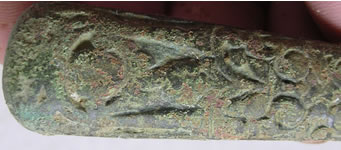  |
||||||
|
Georgian
decorated cutlery handle |
||||||
|
|
||||||
'Eating implements, until the end of the 17th century, consisted of a knife and a spoon only: the fork, despite being in use in some Continental countries and not unknown in Britain, was not yet in general use. Furthermore, one’s knife and spoon were personal possessions, in the sense that one carried them and used them when dining at other houses, as they were not supplied at table by the host. It follows that the material from which one’s spoon was made would be an indicator of one’s social and financial status.'
Brass seal top spoon Stuart, around 1650 A brass spoon with a seal top end and fleur de lys stamped on the bowl. In the 17th century people carried their own personal eating utensils as well as writing instruments. Most letters and documents at the time were sealed with wax,
PAS lists these spoon handles as EARLY POST MEDIEVAL (Certain), Circa 1500 AD - Circa 1599 AD The designs of the silver examples I found indicate a date range from Elizabeth 1st to Charles 1st
James 1st seal top spoon |
||||||
Knives |
||||||
Victorian fish knife
1920's bone handled pen knife
Medieval bronze knife handle
Medieval knife pommels
Medieval knife quillions
Roman knife pommels
|
||||||
Georgian Pastry jiggers
|
||||||
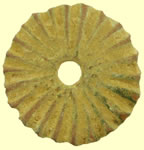 |
 |
 |
||||
  |
 |
 |
||||
 |
 |
  |
||||
 |
|
|||||
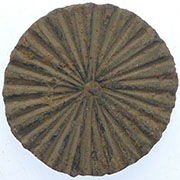 |
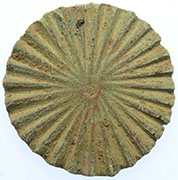 |
 |
 |
|||
 |
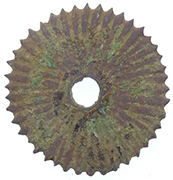 |
 |
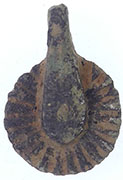 |
|||
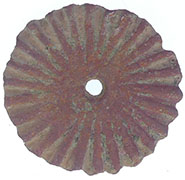 |
 |
 |
 |
|||
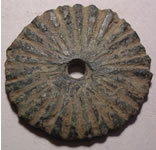 |
 |
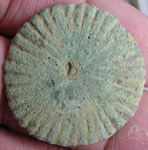 |
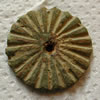 |
|||
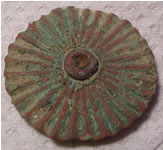 |
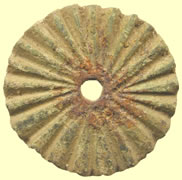 |
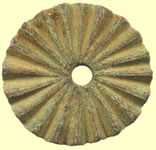 |
 |
|||
 |
 |
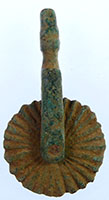 |
 |
|||
 |
||||||
 |
||||||

